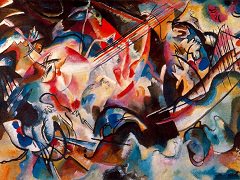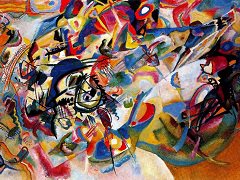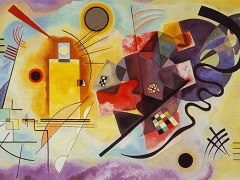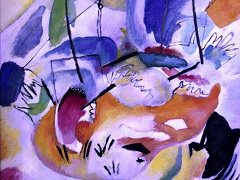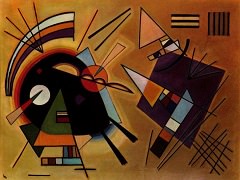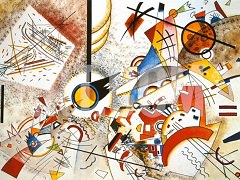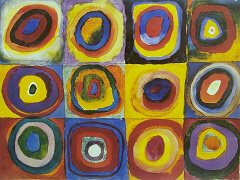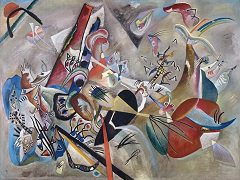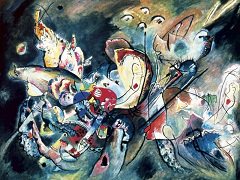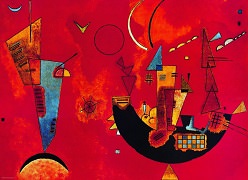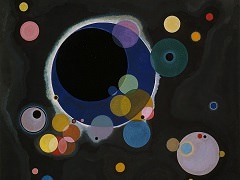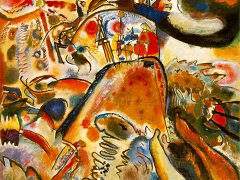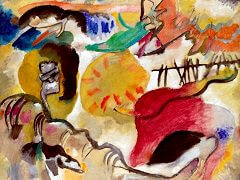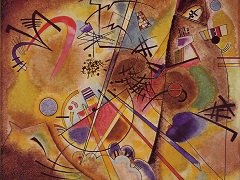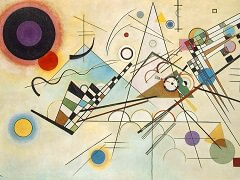White Oval, 1919 by Wassily Kandinsky
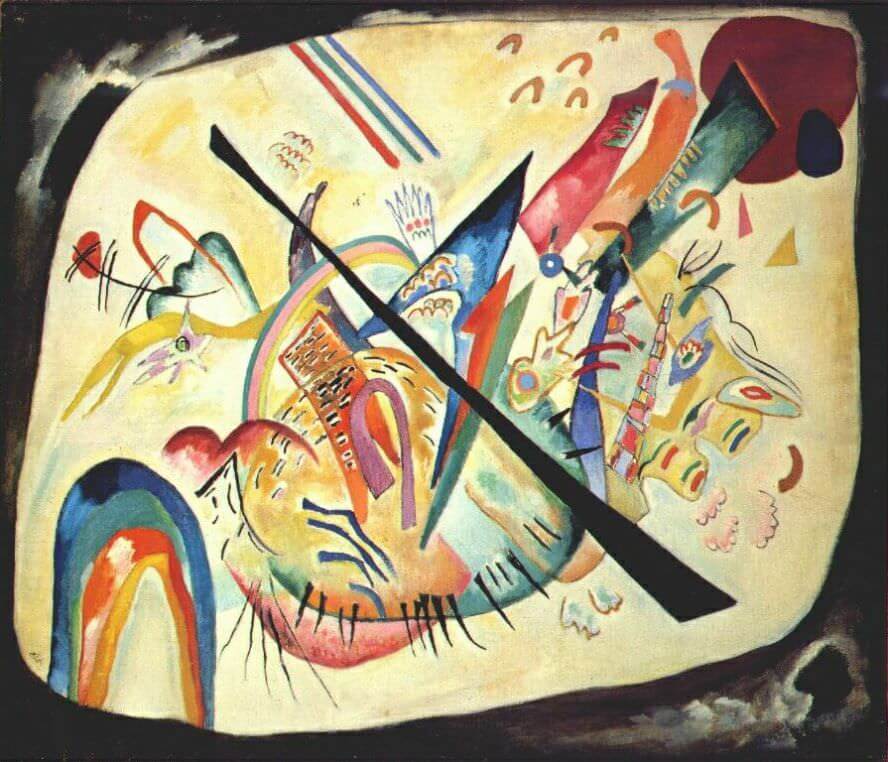
Kandinsky had effectively severed his connections with the Constructivist and Suprematist avant-garde when using Abstract-Expressionist forms in his own paintings, for example, White Ovol. For him, 'The meeting of the painted angle of a triangle and a circle is not less effective than the finger of God touching Adam's finger in The Creation of Adam by Michelangelo.
Kandinsky's approach to the problem of Abstraction is rather different to the Constructivists. He began in 1919 to reassess a problem that he had, like many artists, encountered many gears before - the limitations and constrictions imposed by the physical properties of a canvas, namely its rectilinear properties. In his book Reminiscences, which had' been reprinted in 1918, he openly discloses the challenge of the white canvas as he 'learned to do battle with the canvas, to come to know it as a being resisting my wish'. The restrictions of the canvas come to be seen by Kandinsky as antithetical to the objects that we see in the physical world. This issue was to be developed in his 1926 essay, Point and Line to Plane. In the meantime Kandinsky removes the limits of the 'plane' in this picture by utilizing an amorphous background form.

